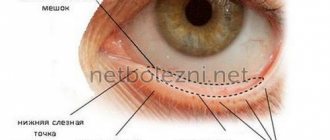They say that all the most beautiful and sad works of art were created in the fall and it’s all to blame for depression, which at this time covers quite a large part of the world’s population. What is autumn depression? Does such a diagnosis exist in medicine, or did people who like to mope come up with it themselves in order to somehow justify their tendency to pessimism?
What is autumn depression
A beautiful autumn day, amazing weather, sunny and still warm. People are taking advantage of the last warm days to enjoy the sun before the long winter. It would seem that everything is great, but nevertheless, something is wrong - your good mood has disappeared somewhere, and unreasonable irritability has appeared in its place. If such feelings are familiar to you, then it is likely that you have autumn depression.
Content:
- What is autumn depression
- What Causes Autumn Depression
- How to recognize seasonal blues
- Should autumn depression be treated?
- Diet against autumn sadness
- Foods that increase autumn depression
- How to prevent blues
People say different things about autumn depression. You can often hear that such a disorder does not exist and all mood swings have nothing to do with the change of seasons. Others mistakenly believe that depression is simply sadness or a personality trait. Meanwhile, experts have a slightly different opinion on this matter.
The term “autumn depression” is relatively new. It was invented in 2005 by therapist Gene Scully. In the literature you can find other names for this condition - seasonal affective disorder or seasonal affective syndrome. This condition is characterized by a number of psychosomatic disorders that occur in people as autumn approaches and usually persist until the first months of winter. Depression may have a social, psychological or biological origin. In addition, there is a so-called summer type of seasonal depression. It is not as common as autumn. This disorder begins in late spring and early summer and ends in the fall.
It is estimated that approximately 4-5% of the total population of the planet suffers from autumn depression, and in 10-20% of them the disorder is not accompanied by pronounced symptoms. Autumn depression is more common in women than in men. The peak manifestation of the disorder is at the age of 40-55 years. Autumn blues also happen in children. There is evidence that approximately 1.7% of children over 9 years of age also suffer from seasonal affective disorder.
Autumn depression cannot be underestimated. This is one of the most common causes of alcoholism and suicide. Statistics indicate that every two out of three suicides suffered from depression. It is also interesting that the autumn blues last longer and are more severe among residents of northern countries, that is, regions with less sunlight. And it extremely rarely affects residents of countries where the weather remains sunny all year round.
Some believe that autumn depression is the result of a lack of willpower. However, in 2007, American experts conducted an experiment with the participation of people suffering from depression. It turned out that the more the subjects tried to suppress their blues and anxiety, the more the so-called “fear center” was activated in their brains. This allowed experts to conclude that willpower has nothing to do with depression. And it’s hard to blame Abraham Lincoln or Winston Churchill for lack of willpower, but they, nevertheless, constantly suffered from the seasonal blues.
Another common misconception about depression is that it is not a real illness. Yes, blues cannot be diagnosed by a blood test, like diabetes, for example. However, this is a real disease that requires professional treatment. Therefore, depression and sad mood should not be confused. Sadness is fleeting and temporary, it appears regardless of the time of year and always has a specific reason. Seasonal depression appears regularly at the same time (in the fall) and for seemingly no apparent reason.
Characteristic manifestations
Regardless of a person’s gender and age, similar signs of autumn depression may occur. The main ones include:
- apathy, reluctance to perform any actions, even those that were previously interesting;
- decreased performance and quality of tasks performed;
- dissatisfaction with oneself and others, excessive criticism, demandingness;
- changes in taste preferences, eating behavior;
- constant analysis of your essence, life, what has not been achieved at the moment;
- conviction of one's worthlessness, which can lead to thoughts of suicide;
- a state of melancholy, aggravated regardless of the time of day, as well as the activity in which the individual is engaged;
- reluctance to create social contacts, enter into dialogues with other people, or the opposite behavior - the need for universal attention;
- fussiness, inability to concentrate on something;
- problems sleeping, frequent awakenings, insomnia, constant drowsiness;
- the emergence of new fears, irrational anxiety, premonition of disaster.
What Causes Autumn Depression
It is difficult to answer with certainty what causes autumn depression. Different researchers put forward different theories, many of which have a rational grain. One of the most common theories explains the seasonal blues due to hormonal changes. But there are other assumptions.
Increase melatonin
As daylight hours shorten, the concentration of the hormone melatonin increases in the human body. The more of this substance in our bodies, the stronger and more often we want to sleep and the less interest our usual life causes.
In addition, excess melatonin leads to a decrease in body temperature, which activates another response - consuming more high-calorie foods, which serve as a source of energy.
These seasonal changes in the body explain why, for some people, fall and winter are all about sleeping and eating. The result of this lifestyle is rapid weight gain, which makes depression even worse.
Decreased serotonin levels
As for hormonal levels, in this regard, everything in the human body is interconnected. As a rule, an increase in the concentration of one hormone causes a decrease in another. This happens with the “duet” melatonin-serotonin. The higher the melatonin content, the less serotonin in our blood. The latter is also known as the hormone of good mood or happiness. A lack of this hormone is a direct path to deep depression.
Decreased dopamine
Dopamine is another hormone whose amount in our bodies directly depends on the intensity of sunlight. The shorter the day, the less dopamine we have and the more prone we are to blues. Dopamine is responsible for concentration and attention. When the body lacks a hormone, a person loses interest in many previously loved things, including life in general.
Vitamin D deficiency
Decreasing sunshine is one of the biggest reasons why people suffer from anxiety and depression in the fall or winter. At this time, the days become shorter, most of us spend less time outside, our skin is less exposed to the sun, which causes a deficiency of vitamin D. And according to the results of many studies, a lack of this vitamin leads to depression and irritability. Fortunately, during the fall and winter, vitamin D can be taken with food or in the form of pharmacy vitamins. So everyone can cope with this cause of autumn depression.
Seasonal allergies
A 2009 study showed that when a person is sick, their mental state also changes: they feel depressed and become prone to blues. In another experiment, experts found confirmation of the existence of a relationship between allergies and depressive mood. Scientists suggest that the culprits are substances that are produced in the body during allergies and affect the immune system. As a result, against the background of seasonal allergies, immunity deteriorates, and with it, mood.
Scientists say that timely treatment of allergies can help get rid of depression.
Low physical activity
This factor, according to scientists, also contributes to the development of autumn depression. According to American experts studying the nature of the blues, daily 10-minute walks are enough to improve your emotional state and prevent the development of seasonal sadness.
Genetics
Experts are confident that a person’s tendency to fall into depression can also be determined by genetics. If parents or other relatives suffer from prolonged depression, this does not mean that the descendant will necessarily have this disorder. But the family factor still increases the risk of seasonal blues. Therefore, it is very important for people with a family history of depression to avoid drugs and alcohol, which can serve as triggers for the disorder.
Return to school/work
Do you think schoolchildren and students don’t experience autumn depression? It happens, and what! Even if a child enjoys studying, returning to school after the summer holidays is always stressful (for some it’s mild, for others it’s more intense). It is not easy for everyone to switch to a new mode of life, and if this time happened during a period of cold weather and rains, then it is often not easy for children to survive the “perestroika” “painlessly”. Hence the blues. Something similar happens to adults whose vacation (especially if it was long) occurred in the summer, and in September it is time to return to work.
Who is at risk?
- Female.
According to statistics, ladies are 4 times more likely to experience the autumn blues than men; - People living in northern latitudes.
There a person experiences a severe deficiency in vitamin D, sunlight, and warmth. This has a depressing effect on the body; - Diagnosed with bipolar affective disorder
. If a doctor has given such a diagnosis to a person, then most likely the disease will worsen depending on the season of the year; - Having a hereditary predisposition.
If someone in the family suffers from depression (especially both parents), then the likelihood of the child encountering a similar disease is high; - Children, teenagers
. Due to strong emotional experiences, the onset of academic workload, a change in their usual (over the summer) lifestyle, or other stressful situations, they are susceptible to mental disorders, including seasonal ones.
How to recognize seasonal blues
The disorder, depending on its severity, can manifest itself with different symptoms. But there is always something in common - signs by which one can suspect seasonal depression in a person. Here they are:
- unmotivated sadness;
- lack of interest in the things that make up daily life;
- reluctance to do anything;
- insomnia or, conversely, the desire to constantly sleep;
- impaired concentration;
- irritability, moodiness;
- the desire to protect oneself from other people;
- decreased sex drive;
- loss of appetite (either complete absence or desire to constantly eat);
- thoughts about suicide.
These signs may appear to a greater or lesser extent, in different combinations. But they are always a warning sign.
Ritual to attract positive energy
To carry out this ritual, you will need things symbolizing 4 elements, namely:
- bird feather;
- candle;
- a bag of earth;
- glass of water.
You need to sit on the floor, put a bag of earth behind you, place a glass of water in front of you, and place a lit candle and a feather on the sides. Next, you need to close your eyes and enter a kind of trance state.
The remnants of the fabric made a beautiful and comfortable floor pouf: take note
Excessive sputum production and other types of cough that require you to see a doctor
Geometric figures in the stormy personal life of Valery Afanasyev
You should count to 20 and say the following words:
Like fire, I burn, like air, I soar through space, wise/wise, like the earth I walk on, I can adapt like water. Sorrows will go away. May it always be so.
You need to sit surrounded by the four elements for a few more minutes and imagine how they empower you. This will help overcome negativity.
Should autumn depression be treated?
The answer to this question depends on the state of the person who succumbs to autumn sadness. Some people experience mild blues for a few days or weeks, but even during this time the disorder does not manifest itself with life-threatening symptoms. In such cases, we can talk about a “bad mood,” from which a person often recovers on his own or with the support of friends. But there are times when it seems impossible to pull a person out of depression without qualified help from specialists. If he is not provided with the help of a psychologist, psychotherapist or psychiatrist in time, you can be sure that the blues will not end when the weather improves, but will only get worse.
Treatment of seasonal depression can be based on different approaches and techniques: from the use of antidepressants to increase the level of serotonin in the body, to phototherapy and psychotherapy methods.
Special practices
There are many options for meditation to restore energy and strength. You can use them at the beginning of autumn or use another simple morning meditation. You should take a sitting position, placing yourself in front of the window.
You need to close your eyes and relax. Imagine the sun and feel its warmth, as if saturated with this energy. It only takes a couple of minutes to become more successful.
Rospotrebnadzor explained what will happen to teachers for refusing vaccination
A new image of Venus surprised scientists with unexpected details
Homemade cheesecake with chocolate and Oreo cookies: dessert is an absolute delight
To recharge yourself with positivity, you should repeat various motivational phrases as often as possible. You can also record words on a voice recorder and listen to them.
Diet against autumn sadness
Autumn depression can be avoided if you slightly adjust your diet. In particular, to prevent or eliminate the blues, it is important to include in your diet foods that contain substances that will be discussed below. Their task is to restore serotonin levels and improve the relationship between nerve cells in the brain, which is also important for effectively combating autumn depression.
Vitamin C. This vitamin has proven to be very useful in treating depression, including bipolar depression. It reduces the amount of vanadium in the body, which has been recognized as one of the culprits of the blues. Sources of vitamin C: citrus fruits (lemons, grapefruits, oranges), pineapple, strawberries, papaya, onions, garlic, almonds, walnuts, cashews.
Vitamin B9. This substance is one of the most effective for increasing serotonin. The most useful are cashews, asparagus, oats, cabbage, peppers, oranges, carrots, lettuce, tomatoes, apples, pears, almonds, and potatoes.
Vitamin B12. It is important for the proper functioning of the central nervous system. Best sources: shellfish, chicken liver, red meat, milk.
Tryptophan. This amino acid is considered the best natural relaxant, and it also serves as the “raw material” for the production of serotonin. You can restore tryptophan reserves from chicken and turkey meat, citrus fruits, tomatoes, mangoes, figs, chestnuts, oatmeal, cabbage, cashews, onions, and pumpkin.
Phenylalanine. This amino acid promotes the production of norepinephrine, which in turn prevents depression. This component can be found in all protein foods.
Best materials of the month
- Coronaviruses: SARS-CoV-2 (COVID-19)
- Antibiotics for the prevention and treatment of COVID-19: how effective are they?
- The most common "office" diseases
- Does vodka kill coronavirus?
- How to stay alive on our roads?
Calcium. It, together with magnesium, potassium, selenium and lithium, can also serve as a good prevention of depressive disorders. It can be obtained from cabbage, chestnuts, walnuts, apples, mangoes, avocados, and almonds.
Omega-3. Referring to the results of various studies confirming the antidepressant properties of Omega-3, experts advise eating foods containing unsaturated fatty acids in the fall. First of all, we are talking about fatty sea fish and flaxseed oil.
Capsaicin. This substance is found in hot peppers (chili, cayenne). It has been proven that endorphins, known as “happiness hormones,” are more actively produced in the bodies of spicy food lovers. If there are enough of them in the body, there can be no talk of any depression.
Garlic. When talking about products against the autumn blues, it is impossible not to mention this vegetable separately. It contains almost all substances with antidepressant properties. Garlic is a source of vitamin C, magnesium, calcium, potassium, selenium, phenylalanine and tryptophan. In addition, it contains substances that have a beneficial effect on the entire nervous system: caffeic acid, apigenin, geraniol, linalool, stigmasterol.
Methods of counteraction
Psychotherapy is most effective in combating any depression.
Let's figure out what to do in the situation if you realize that you are experiencing autumn depression, what methods of therapy are available to you.
- Drug therapy. Prescribed only by a specialist. Selective serotonin reuptake inhibitors, such as Fluoxetine or Prozac, may be prescribed. They may also recommend Bupropion, another type of antidepressant that can treat this disorder.
- Light therapy. This method is based on replacing the weakened light of the Sun with daily exposure to intense artificial light.
- Taking vitamin D if depression is based on low vitamin D levels. However, some experts believe that this supplement alone is not effective in combating this type of depressive disorder.
- Psychotherapy. If you are interested in the question of how to survive autumn depression, then the most effective way is psychotherapy sessions. In particular, for this condition, specialists use the method of cognitive behavioral therapy, which is based on identifying negative thoughts and changing them to positive ones. At the same time, behavioral activation is used to promote the search for a pleasant, exciting activity that can be done both at home and outside.
Foods that increase autumn depression
It is widely believed that dark chocolate helps fight bad mood. However, this does not mean that you can “treat” autumn depression with any sweets.
On the contrary, scientists have found evidence that simple sugars, by affecting processes in the brain, only increase depression. Also in the fall, you should be careful when consuming coffee and other caffeine-containing products, as they can aggravate the blues.
Alcohol and other stimulants are strictly prohibited for people prone to seasonal depression. These products have pronounced depressant properties. Many people mistakenly believe that alcohol helps improve their mood. In fact, and this is scientifically proven, any alcohol affects the human brain as a depressant.
What symptoms does it manifest?
Autumn depression is based on a decrease in a person’s overall physical and emotional well-being. Symptoms of depressive disorder are:
- Physical weakness.
- Drowsiness.
- Dizziness.
- Craving for overeating sweet, starchy foods (female depressive symptom).
- Decreased self-esteem.
- Melancholy and despondency.
- Sad, intrusive thoughts.
- Tendency to suicidal thoughts.
- Decreased libido (sexual desire).









